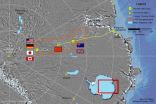(Press-News.org) Not all racial and ethnic groups have equal access to kidney transplantation, according to a study appearing in an upcoming issue of the Journal of the American Society Nephrology (JASN). The results indicate that the reasons for these disparities are varied and that more focused efforts are needed to address them.
For most individuals who develop kidney failure or end-stage renal disease, kidney transplantation is the best treatment option. Unfortunately, certain racial and ethnic groups are less likely to receive kidney transplants than others. Despite the increasing diversity of patients on dialysis who need kidney transplants, no prior studies had comprehensively compared the barriers to transplantation among different racial and ethnic groups.
Yoshio Hall, MD (University of Washington, Seattle) and his colleagues investigated the rates and determinants of waitlisting and deceased-donor kidney transplantation among 503,090 non-elderly adults of different racial and ethnic groups who initiated dialysis between 1995 and 2006. They followed the patients through 2008.
The researchers found that the annual crude rates of deceased-donor transplantation from the time of dialysis initiation were lowest in American Indians/Alaska Natives (2.4%) and blacks (2.8%), intermediate in Pacific Islanders (3.1%) and Hispanics (3.2%), and highest in non-Hispanic whites (5.9%) and Asians (6.4%).
The reasons for these differences in rates varied among racial and ethnic groups: blacks, American Indians, and Alaska Natives face continued difficulty in accessing transplant waitlists, primarily due to socioeconomic factors, while Hispanics and Pacific Islanders encounter delays from waitlists, which may be negatively influenced by regional organ availability, linguistic isolation, and perhaps cultural isolation. "Looking forward, our study suggests that interventions to address local population-specific barriers to transplantation may help to reduce overall racial, ethnic, and socioeconomic disparities in accessing kidney transplantation," said Dr. Hall.
###
Study co-authors include Ping Xu, Ann O'Hare, MD (University of Washington, Seattle); Andy Choi, MD (University of California San Francisco); and Glenn Chertow, MD (Stanford University).
Disclosures: Dr. Ann O'Hare reported receiving royalties from UpToDate, Inc. All other authors reported no financial disclosures.
The article, entitled "Racial Ethnic Differences in Rates and Determinants of Deceased Donor Kidney Transplantation," will appear online at http://jasn.asnjournals.org/ on March 3, 2011, doi 10.1681/ASN.2010080819.
The content of this article does not reflect the views or opinions of The American Society of Nephrology (ASN). Responsibility for the information and views expressed therein lies entirely with the author(s). ASN does not offer medical advice. All content in ASN publications is for informational purposes only, and is not intended to cover all possible uses, directions, precautions, drug interactions, or adverse effects. This content should not be used during a medical emergency or for the diagnosis or treatment of any medical condition. Please consult your doctor or other qualified health care provider if you have any questions about a medical condition, or before taking any drug, changing your diet or commencing or discontinuing any course of treatment. Do not ignore or delay obtaining professional medical advice because of information accessed through ASN. Call 911 or your doctor for all medical emergencies.
Founded in 1966, and with more than 12,000 members, the American Society of Nephrology (ASN) leads the fight against kidney disease by educating health professionals, sharing new knowledge, advancing research, and advocating the highest quality care for patients.
Not everyone treated equally when it comes to kidney transplantation
Barriers differ among racial and ethnic groups
2011-03-04
ELSE PRESS RELEASES FROM THIS DATE:
Stanford scientists create neurons with symptoms of Parkinson's disease from patient's skin cells
2011-03-04
STANFORD, Calif. — Neurons have been derived from the skin of a woman with a genetic form of Parkinson's disease and have been shown to replicate some key features of the condition in a dish, say researchers at the Stanford University School of Medicine. The scientists hope to use the neurons to learn more about the disorder and to test possible treatments. Such a tool is critical because there are no good animal models for Parkinson's disease. It also validates the use of induced pluripotent stem cells, or iPS cells, to model various diseases.
"Now that we can see that ...
New method allows human embryonic stem cells to avoid immune system rejection, Stanford study finds
2011-03-04
STANFORD, Calif. — A short-term treatment with three immune-dampening drugs allowed human embryonic stem cells to survive and thrive in mice, according to researchers at the Stanford University School of Medicine. Without such treatment, the animals' immune systems quickly hunt down and destroy the transplanted cells. The finding is important because it may allow humans to accept transplanted stem cells intended to treat disease or injury without requiring the ongoing use of powerful immunosuppressant medications.
Just as it does with transplanted organs, the human body ...
What is good for you is bad for infectious bacteria
2011-03-04
Plants are able to protect themselves from most bacteria, but some bacteria are able to breach their defences. In research to be published in Science on Friday, scientists have identified the genes used by some strains of the bacterium Pseudomonas to overwhelm defensive natural products produced by plants of the mustard family, or crucifers.
"Microbes only become pathogens when they find a way to infect a host and overwhelm the host defences," said lead author Dr Jun Fan from the John Innes Centre on the Norwich Research Park.
"Our findings answer some important questions ...
Scientists call for 'swifter and sounder' testing of chemicals
2011-03-04
PULLMAN, Wash.—Scientific societies representing 40,000 researchers and clinicians are asking that federal regulators tap a broader range of expertise when evaluating the risks of chemicals to which Americans are being increasingly exposed.
Writing in a letter in the journal Science, eight societies from the fields of genetics, reproductive medicine, endocrinology, developmental biology and others note that some 12,000 new substances are being registered with the American Chemical Society daily. Few make it into the environment, but the top federal regulators, the U.S. ...
Some Antarctic ice is forming from bottom
2011-03-04
Scientists working in the remotest part of Antarctica have discovered that liquid water locked deep under the continent's coat of ice regularly thaws and refreezes to the bottom, creating as much as half the thickness of the ice in places, and actively modifying its structure. The finding, which turns common perceptions of glacial formation upside down, could reshape scientists' understanding of how the ice sheet expands and moves, and how it might react to warming climate, they say. The study appears in this week's early online edition of the leading journal Science; ...
UCI researchers find new light-sensing mechanism in neurons
2011-03-04
Irvine, Calif. — A UC Irvine research team led by Todd C. Holmes has discovered a second form of phototransduction light sensing in cells that is derived from vitamin B2. This discovery may reveal new information about cellular processes controlled by light.
For more than 100 years, it had been believed that the phototransduction process was solely based on a chemical derived from vitamin A called retinal. Phototransduction is the conversion of light signals into electrical signals in photoreceptive neurons and underlies both image-forming and non-image-forming light ...
Yachting Exclusive: Fraser Yachts Announce New Luxury Yachts for Sale in 2011
2011-03-04
Fraser Yachts is delighted to announce the addition of five new vessels to their ever expanding list of luxury yachts for sale. Built in 1967 and refurbished in 2005, the largest of the new collection is M/Y Il Odyssey yacht. Hailing from the Benetti Yachts shipyard, the Il Odyssey luxury yacht is 37.8m in length and can sleep 9 guests and 6 crew members. She is currently on sale in Monaco for EUR1,950,000.
One of the youngest luxury yachts for sale is M/Y Team VIP yacht. Built in 2010, and built by Guy Couach, this mega yacht is the newest of its siblings of four. ...
Public's budget priorities differ dramatically from House and Obama
2011-03-04
COLLEGE PARK, Md. – When it comes to the federal budget, the public is on a different page than either the House of Representatives or the Obama Administration – with a different set of priorities and a greater willingness to cut spending and increase taxes – concludes a new analysis by the University of Maryland's Program for Public Consultation (PPC).
This new analysis compares the House and administration budget proposals with those produced by a representative sample of U.S. adults. These public budgets were part of an innovative study released last month.
While ...
New observations of the giant planet orbiting beta Pictoris
2011-03-04
Astronomy & Astrophysics publishes new high angular resolution observations of the giant planet orbiting the star beta Pictoris. Located at 63.4 light-years from the Sun, beta Pic is a very young star of about 12 million years old [1], which is 75% more massive than our Sun. beta Pic is well known for harboring an extended and structured circumstellar disk. It was actually the first star to have its disk directly imaged more than 25 years ago. In 2009, a giant planet was seen orbiting within the disk. With an orbital distance of 8 to 15 astronomical units (AU), beta Pictoris ...
26 percent of herbs eaten in Spain are contaminated with bacteria
2011-03-04
A research team from the University of Valencia has discovered that up to 20% of spices and 26% of herbs sold in Spain are contaminated by various bacteria, reducing their quality. The study, which is the first of its kind in Spain, suggests that health and hygiene control systems should be put in place, from cultivation of these products right through to when they reach the market.
Scientists from the University of Valencia have for the first time studied the microbiological quality of 53 samples of spices and herbs such as thyme and oregano sold at Spanish markets.
The ...
LAST 30 PRESS RELEASES:
Why nail-biting, procrastination and other self-sabotaging behaviors are rooted in survival instincts
Regional variations in mechanical properties of porcine leptomeninges
Artificial empathy in therapy and healthcare: advancements in interpersonal interaction technologies
Why some brains switch gears more efficiently than others
UVA’s Jundong Li wins ICDM’S 2025 Tao Li Award for data mining, machine learning
UVA’s low-power, high-performance computer power player Mircea Stan earns National Academy of Inventors fellowship
Not playing by the rules: USU researcher explores filamentous algae dynamics in rivers
Do our body clocks influence our risk of dementia?
Anthropologists offer new evidence of bipedalism in long-debated fossil discovery
Safer receipt paper from wood
Dosage-sensitive genes suggest no whole-genome duplications in ancestral angiosperm
First ancient human herpesvirus genomes document their deep history with humans
Why Some Bacteria Survive Antibiotics and How to Stop Them - New study reveals that bacteria can survive antibiotic treatment through two fundamentally different “shutdown modes”
UCLA study links scar healing to dangerous placenta condition
CHANGE-seq-BE finds off-target changes in the genome from base editors
The Journal of Nuclear Medicine Ahead-of-Print Tip Sheet: January 2, 2026
Delayed or absent first dose of measles, mumps, and rubella vaccination
Trends in US preterm birth rates by household income and race and ethnicity
Study identifies potential biomarker linked to progression and brain inflammation in multiple sclerosis
Many mothers in Norway do not show up for postnatal check-ups
Researchers want to find out why quick clay is so unstable
Superradiant spins show teamwork at the quantum scale
Cleveland Clinic Research links tumor bacteria to immunotherapy resistance in head and neck cancer
First Editorial of 2026: Resisting AI slop
Joint ground- and space-based observations reveal Saturn-mass rogue planet
Inheritable genetic variant offers protection against blood cancer risk and progression
Pigs settled Pacific islands alongside early human voyagers
A Coral reef’s daily pulse reshapes microbes in surrounding waters
EAST Tokamak experiments exceed plasma density limit, offering new approach to fusion ignition
Groundbreaking discovery reveals Africa’s oldest cremation pyre and complex ritual practices
[Press-News.org] Not everyone treated equally when it comes to kidney transplantationBarriers differ among racial and ethnic groups





